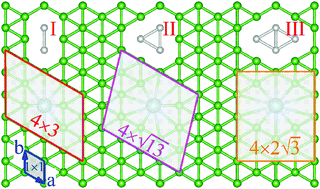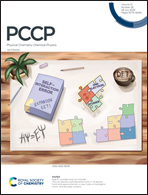Motif based high-throughput structure prediction of superconducting monolayer titanium boride†
Abstract
Two-dimensional boron structures, due to their diverse properties, have attracted great attention because of their potential applications in nanoelectronic devices. A series of TiBn (2 ≤ n ≤ 13) monolayers are efficiently constructed through our motif based method and theoretically investigated through high-throughput first-principles calculations. The configurations are generated based on the motifs of boron dimeric/triangular/quadrilateral fragments and multi-coordinate titanium-centered boron molecular wheels. Besides previously reported TiB4 and TiB9 which were discovered by the global search method, we predict that high symmetry monolayer TiB7 (Cmmm), which is octa-coordinate titanium boride, is dynamically stable. The TiB7 monolayer is a BCS superconductor with a transition temperature Tc of up to 8.3 K. The motif based approach is proved to be efficient in searching stable structures with prior knowledge so that the potentially stable transition metal monolayers can be quickly constructed by using basic cluster motifs. As an efficient way of discovering materials, the method is easily extended to predict other types of materials which have common characteristic patterns in the structure.



 Please wait while we load your content...
Please wait while we load your content...